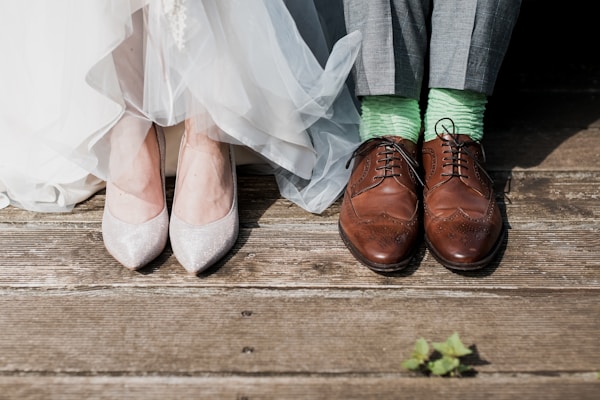Ensuring Comfort in a Fitted Waist Wedding Dress: A Comprehensive Guide
Finding the perfect wedding dress can be a daunting task, especially when it comes to striking the right balance between style and comfort. Many brides-to-be dream of wearing a fitted waist wedding dress that accentuates their figure, yet they also seek to feel comfortable throughout their big day. This article will delve into various aspects of achieving comfort in a fitted waist wedding dress, including design elements, fabric choices, fitting techniques, and more. Additionally, we will explore related queries that might arise along the way, ensuring you are well-equipped to make the best decision for your special day.
Understanding the Importance of Comfort in a Fitted Waist Wedding Dress
The wedding day is one of the most memorable occasions in a person's life, and wearing a wedding dress that is both stunning and comfortable is vital. A fitted waist wedding dress, often designed to encapsulate the bride's silhouette, can make a statement while adding elegance. However, prioritizing comfort alongside aesthetics will ensure that you can enjoy your day without any restrictions. Here are some key factors to consider:
Key Factors to Ensure Comfort in a Fitted Waist Wedding Dress
| Factor | Description |
| Fabric Choice | The right fabric can enhance comfort and breathability. |
| Design Elements | Incorporating elements like stretch or adjustable features can improve fit and comfort. |
| Proper Tailoring | A skilled tailor can help perfect the fit to allow ease of movement. |
| Lining and Support | Well-designed linings offer support while providing comfort. |
| Under Garments | Choosing the right undergarments can significantly influence comfort. |
1. Fabric Choice
Your choice of fabric is crucial in determining both the look and feel of your wedding dress. For a fitted waist dress, opt for fabrics with a bit of stretch like satin, jersey, or silk blends. These fabrics not only hug the body beautifully but also allow for movement without feeling overly restrictive. Look for breathable options to keep you comfortable, especially if your wedding takes place during warmer months or in a humid climate.

2. Design Elements
Incorporating elements such as ruching or draping can add a touch of visual interest while also aiding in comfort. Additionally, consider dresses with adjustable components such as lace-up backs or elasticized waistbands that can accommodate your body's movement throughout the day. A lower back design can also reduce tension around the waist, providing more breathing room.
3. Proper Tailoring
A well-tailored dress is your secret weapon for comfort. It is essential to have your dress fitted by a professional tailor who understands how to balance aesthetics with functionality. During fittings, make sure you can move freely: sit, dance, and walk down the aisle without stress. Effective tailoring also involves selecting the right size to avoid the common pitfalls of being too tight or too loose, which can lead to discomfort.
4. Lining and Support
The lining of a wedding dress can dramatically influence both comfort and structure. Opting for a dress with soft, breathable linings can prevent chafing while providing necessary support. Pay attention to the underwire or boning used for structure, as these elements can either hinder or enhance your comfort level, depending on how they are integrated into the dress.
5. Under Garments
The right undergarments can make a significant difference in how comfortable you feel throughout the day. Consider options like supportive yet comfortable bras that don't dig into your skin. Additionally, shapewear can provide a smooth silhouette, but ensure it is not too tight to avoid discomfort. Choose seamless options to prevent visible lines, and always make sure your undergarments fit well with the design and fabric of your wedding dress.
Tips for Selecting Your Wedding Dress
When embarking on the journey to select the perfect fitted waist wedding dress, keep the following tips in mind:
1. Start Early
Give yourself ample time to explore various styles and fabrics. Starting early in your planning allows for fittings, alterations, and adjustments, ensuring you find the ideal dress.
2. Try Different Styles
Don’t be afraid to try on different styles of fitted waist dresses. Every designer has a unique fit, and what looks good on the hanger may not necessarily flatter your body shape. Explore different silhouettes, lengths, and necklines.
3. Stay True to Your Style
Ultimately, choose a dress that resonates with your personal style. Even though it’s beneficial to consider comfort, don’t compromise on your dream look. Feeling confident is synonymous with feeling comfortable.
4. Get Feedback
Bring along friends or family whose opinions you trust. Sometimes, an outside perspective can help you realize what styles work best for you in both appearance and comfort.
Conclusion: Finding the Balance
In conclusion, ensuring that a wedding dress with a fitted waist also offers comfort involves a careful blend of choosing the right fabric, design elements, professional tailoring, and appropriate undergarments. As a bride, your focus should be on enjoying your day, making memories, and embracing your unique style. Remember, comfort shouldn’t be an afterthought; rather, it should be at the forefront of your decision-making process. Don’t underestimate the impact of proper planning and preparation, as these factors can lead to a stress-free, enjoyable wedding experience. Take your time, explore your options, and ultimately, choose a dress that embodies both beauty and comfort—a dress you can confidently wear as you step into a new chapter of your life.